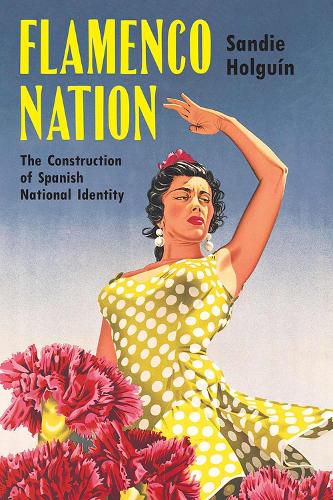Readings Newsletter
Become a Readings Member to make your shopping experience even easier.
Sign in or sign up for free!
You’re not far away from qualifying for FREE standard shipping within Australia
You’ve qualified for FREE standard shipping within Australia
The cart is loading…






This title is printed to order. This book may have been self-published. If so, we cannot guarantee the quality of the content. In the main most books will have gone through the editing process however some may not. We therefore suggest that you be aware of this before ordering this book. If in doubt check either the author or publisher’s details as we are unable to accept any returns unless they are faulty. Please contact us if you have any questions.
How did flamenco-a song and dance form associated with both a despised ethnic minority in Spain and a region frequently derided by Spaniards-become so inexorably tied to the country’s culture? Sandie Holguin focuses on the history of the form and how reactions to the performances transformed from disgust to reverance over the course of two centuries.
Holguin brings forth an important interplay between regional nationalists and image makers actively involved in building a tourist industry. Soon they realized flamenco performances could be turned into a folkloric attraction that could stimulate the economy. Tourists and Spaniards alike began to cultivate flamenco as a representation of the country’s national identity. This study reveals not only how Spain designed and promoted its own symbol but also how this cultural form took on a life of its own.
$9.00 standard shipping within Australia
FREE standard shipping within Australia for orders over $100.00
Express & International shipping calculated at checkout
This title is printed to order. This book may have been self-published. If so, we cannot guarantee the quality of the content. In the main most books will have gone through the editing process however some may not. We therefore suggest that you be aware of this before ordering this book. If in doubt check either the author or publisher’s details as we are unable to accept any returns unless they are faulty. Please contact us if you have any questions.
How did flamenco-a song and dance form associated with both a despised ethnic minority in Spain and a region frequently derided by Spaniards-become so inexorably tied to the country’s culture? Sandie Holguin focuses on the history of the form and how reactions to the performances transformed from disgust to reverance over the course of two centuries.
Holguin brings forth an important interplay between regional nationalists and image makers actively involved in building a tourist industry. Soon they realized flamenco performances could be turned into a folkloric attraction that could stimulate the economy. Tourists and Spaniards alike began to cultivate flamenco as a representation of the country’s national identity. This study reveals not only how Spain designed and promoted its own symbol but also how this cultural form took on a life of its own.